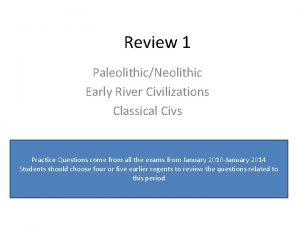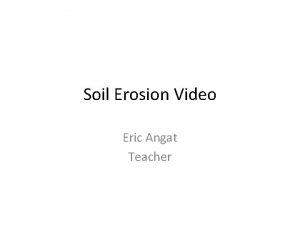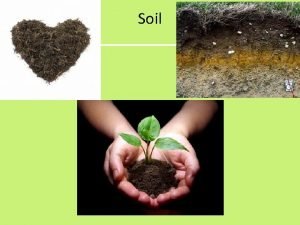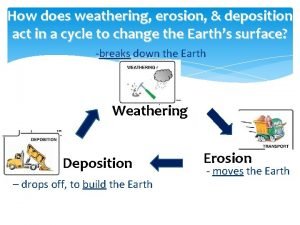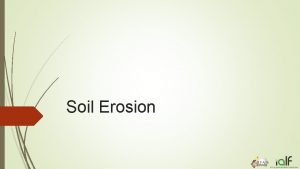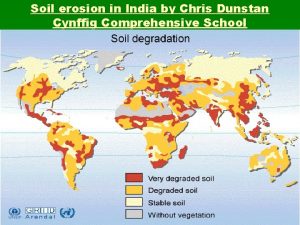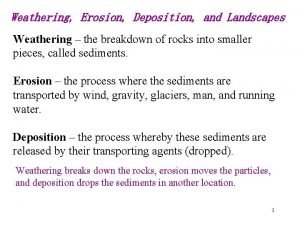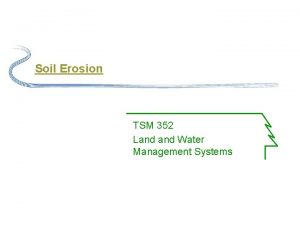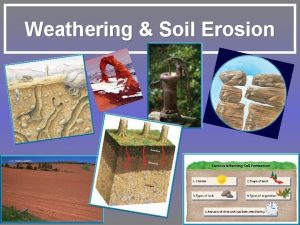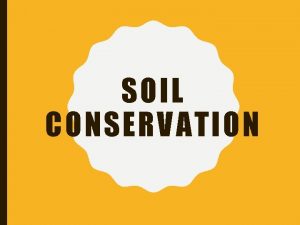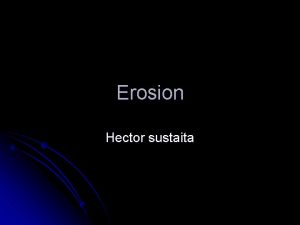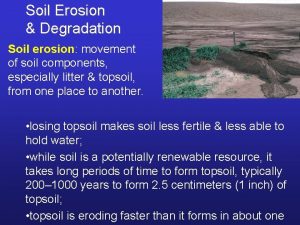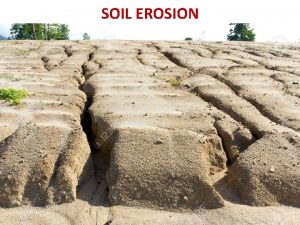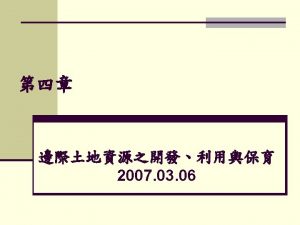Reduce Soil Erosion Soil conservation some methods Terracing











- Slides: 11


Reduce Soil Erosion • Soil conservation, some methods – Terracing – Contour planting – Strip cropping with cover crop – Alley cropping, agroforestry – Windbreaks or shelterbeds – Conservation-tillage farming • No-till • Minimum tillage • Identify erosion hotspots

Fig. 12 -24 a, p. 302

Fig. 12 -24 b, p. 302

Fig. 12 -24 c, p. 302

Fig. 12 -24 d, p. 302

Solutions: Mixture of Monoculture Crops Planted in Strips on a Farm

Conservation Tillage • Conservation-tillage farming: method of soil cultivation that leaves the previous year's crop residue on fields before & after planting the next crop – No-till: involve planting crops directly into residue that either hasn't been tilled at all – Minimum tillage: some residue has been removed, but at least 30 to 70% remains

No Till & Minimum Tillage • Planting into corn residue (no till) • Soybeans grown in striped rows between corn residue (minimum tillage)

Benefits of Conservation Tillage • Environmental benefits – Reduces soil erosion by 60%-90% from rain & wind – Improves soil and water quality by adding organic matter as crop residue decomposes – Conserves water by reducing evaporation – Conserves energy due to fewer tractor trips – Reduces air pollution from dust and diesel – Crop residue provides food and cover for wildlife

Benefits of Conservation Tillage • Practical benefits – Fewer trips across the fields saves time and money (lowers fuel, labor and machinery maintenance costs) and reduces soil compaction that can reduce yields – Optimizes soil moisture, enhancing crop growth in dry periods or on droughty soils
 Use of terracing is an example of a society’s reaction to
Use of terracing is an example of a society’s reaction to Inward sloping bench terrace
Inward sloping bench terrace Control measures of soil erosion slideshare
Control measures of soil erosion slideshare Soil erosion video
Soil erosion video in which part of texas would weathering occur slowly?
in which part of texas would weathering occur slowly? 4 components of soil
4 components of soil Deposition science
Deposition science Soil erosion def
Soil erosion def Soil erosion in india
Soil erosion in india Pictures of different agents of soil erosion
Pictures of different agents of soil erosion Soil erosion
Soil erosion The rate of weathering depends upon the area's ____.
The rate of weathering depends upon the area's ____.
